This DIY Peel P50 kit lets you build your own world’s smallest car

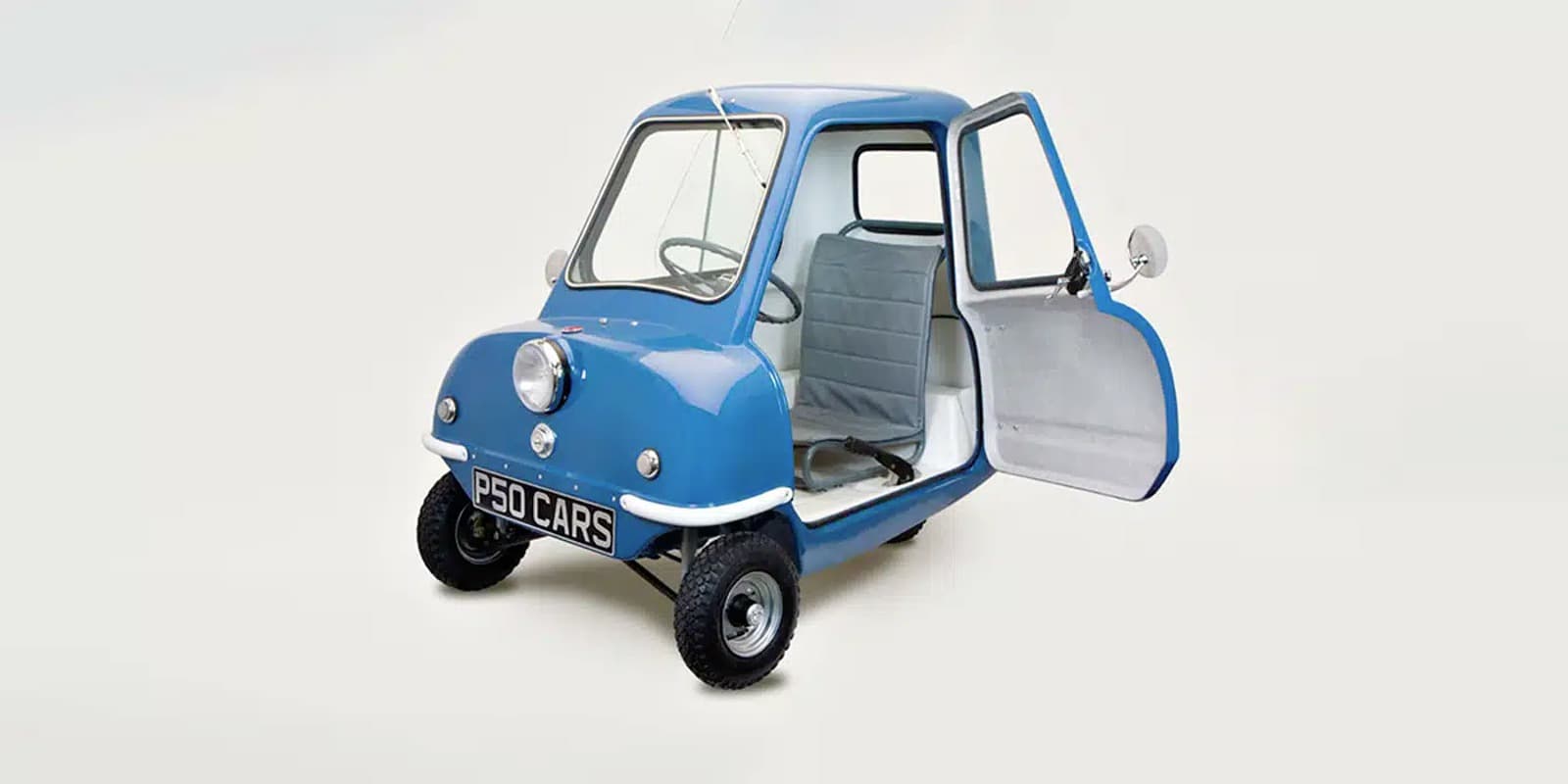
The Peel P50, produced in the early 1960s, was the smallest production automobile in the world. And now a new kit allows handy folks to build their own replica, although this time, it’s electric!
To give you a sense of just how small this tiny three-wheeled automobile is, consider that it would fit in a typical passenger elevator.
It was originally marketed as having space for “one adult and one shopping bag”. It is smaller than a Vespa scooter. It never had a reverse gear, but instead originally came with a handle on the back so you could just pick it up and roll it like a piece of carry-on luggage.
Basically, it was tiny.
Production may have been shut down in 1965, but fortunately a few motivated businessman managed to bring the brand back from the dead. And now the Peel P50 has returned, or at least in a replica form.
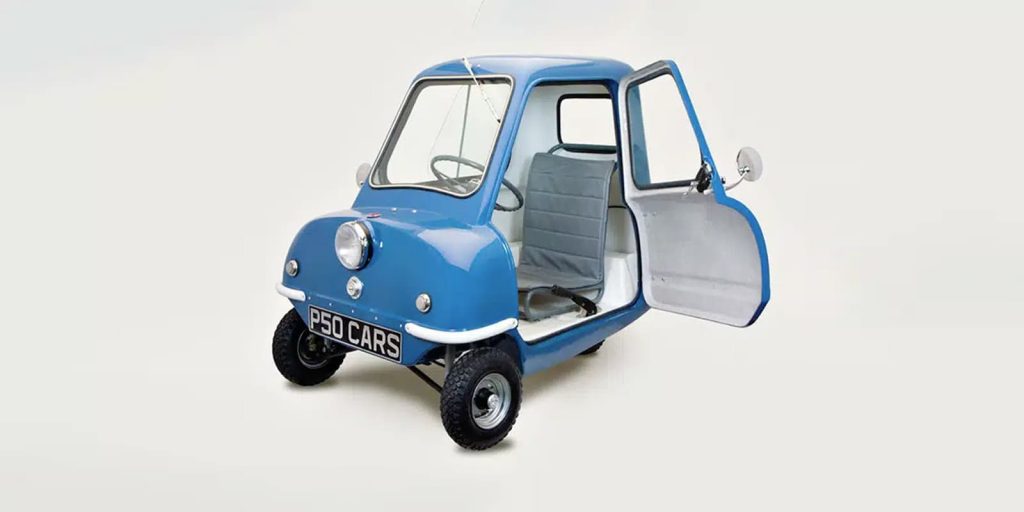
The new company, known as P50 Cars, has created a replica that is much easier to get your hands onto than one of the original 50 production models.
There are both gas-powered and electric versions available, though I’m not sure who would bother with a gas-powered model. When I’m enclosed inside of something the size of a suitcase, the last thing I want in there with me is an operating combustion engine.
The electric version is said to use a 4 kW motor that gets the little vehicle up to a sprightly 28 mph (45 km/h). Those who want even higher power can fit their own electric motor instead of using the 4,000W model that comes in the kit.
The kit includes the wheels, body, seat, steering wheel, drivetrain, and pretty much everything else needed to build your own world’s tiniest electric car. It requires around 50 hours of work to assemble, though the British manufacturer of the kit also sells fully-assembled versions for those that don’t have the skills or time to channel their inner IKEA warrior and build one themselves.
The P50 replica may be small, but it includes all the important parts you’d expect: suspension, lighting, horn, brakes, mirrors, etc. Just like the original, there’s a single door on the left side of the car. It’s a suicide door, which is fitting for what is essentially a suicide car.
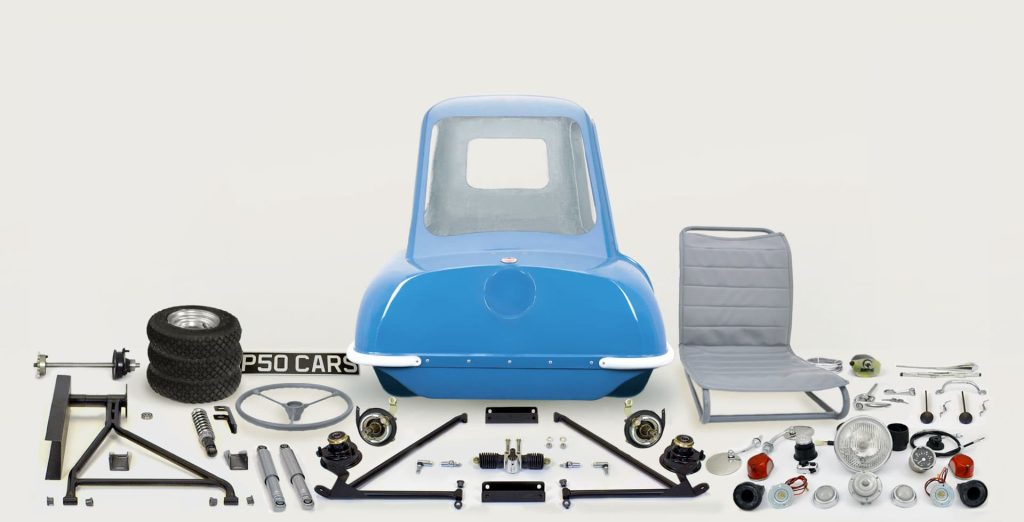
The vehicle is said to be street legal in most jurisdictions as a kit car, moped, or motorcycle.
As the manufacturer explains, the Peel P50 and the company’s larger two-seater car known as the Trident are ideal for self-assembly kits.
“It’s our belief that the P50 and Trident are perfect as self-assembly kit cars, especially as a first build for the novice car builder. Being mechanically simple, extremely lightweight and small by their very nature, they are a great introduction to the art of vehicle building. Our kits come with all the key components to get your ‘World’s Smallest Car’ on the road.
All that is required are a few tools, a little garage space (as little as 6ft by 8ft area) and patience. Approximate build time is around 50 hours start to finish. Registering your kit once built is also more straightforward than most kit cars as in many jurisdictions they are classified as mopeds or light motorcycles.”
The kits aren’t cheap, though neither are most electric microcars these days.
The self-assembly kit starts at £10,379 (approximately US $12,600). A fully-assembled model will set you back £13,972 (approximately US $16,970).
But considering you’d have one of the most unique electric cars in the world, can you really put a price on that?
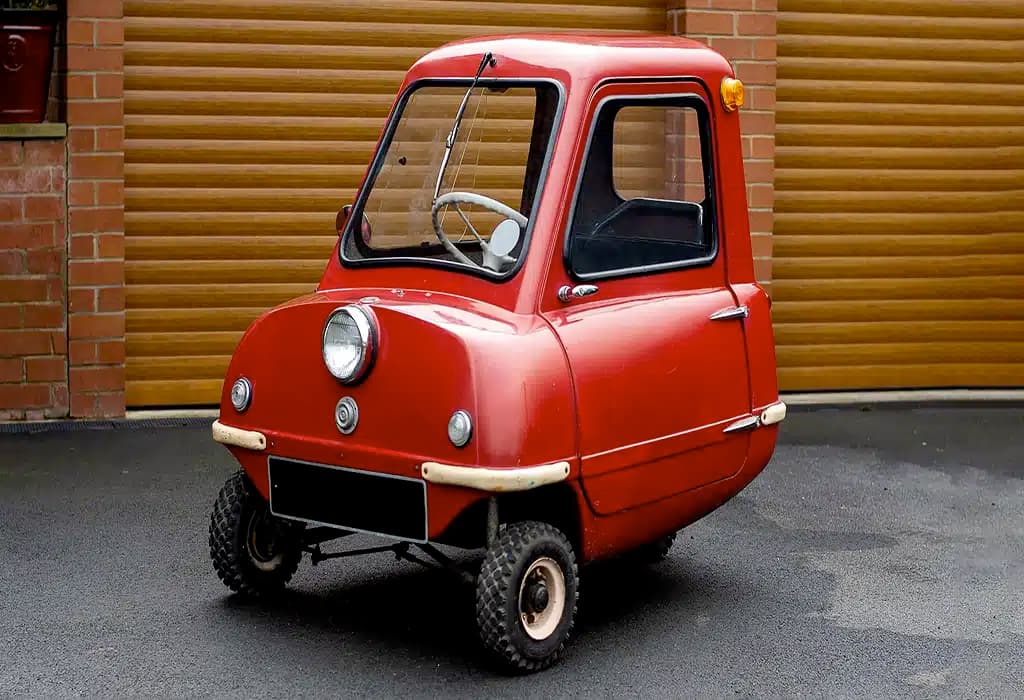
City Dwellers’s Take
This is incredible. Just knowing that these kits exist has already considerably improved my day.
Those who know me will also know that I’m fond of weird, small, and otherwise wacky electric vehicles. This fits the bill perfectly.
Uh oh, I might need to build myself an electric Peel P50.
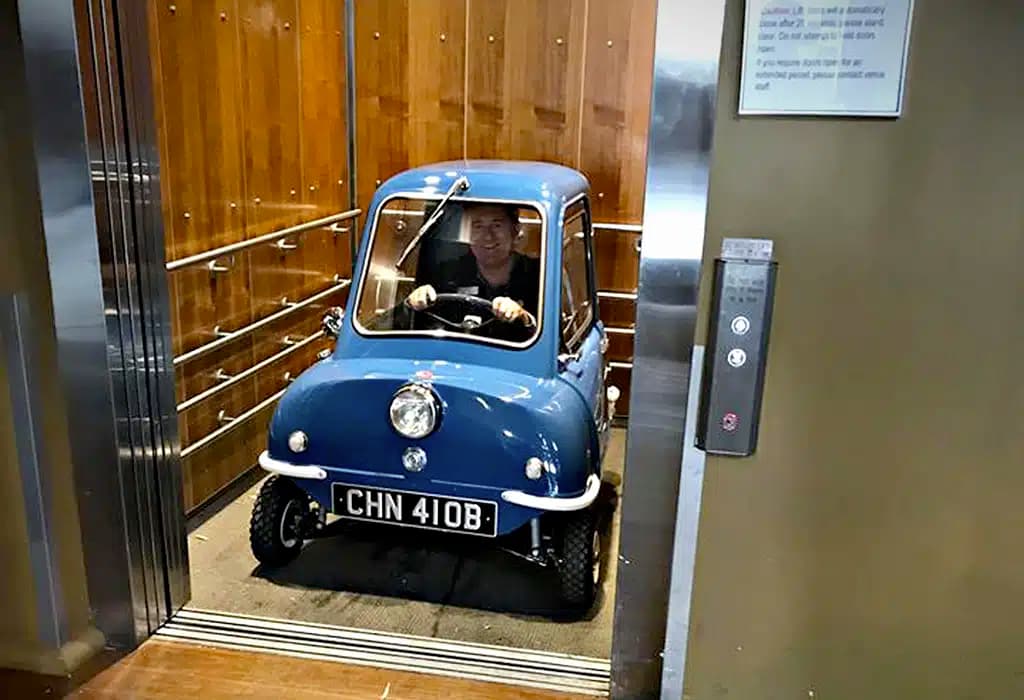
via: Intelligent Living
FTC: We use income earning auto affiliate links. More.